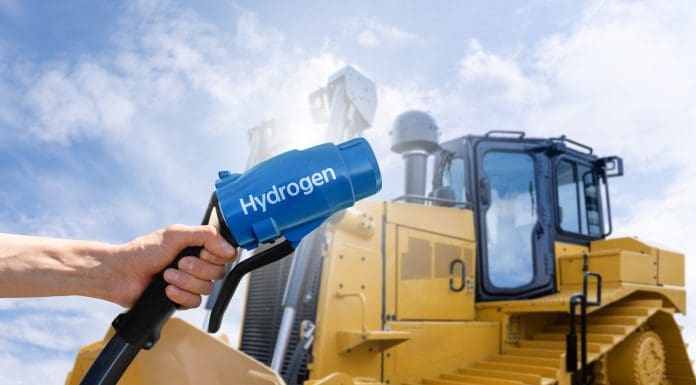The role of building material innovations to reduce emissions

From fuel switching to material substitution, there are actions that every manufacturer can work towards to create increasingly sustainable buildings. Stephanie Palmer, head of sustainability for wienerberger UK, explains more
The construction industry’s contribution to carbon emissions is known and staggering. The UN Environmental Program reported that construction accounts for 37% of global emissions, making the net-zero goal both challenging and ambitious for the sector. But the demand for housebuilding projects is not slowing down. On the contrary, the Labour Government’s bold target of 1.5 million homes by 2030 has turbocharged the housebuilding sector to be building more and faster.
Common hurdles to building more houses at pace include cost management, access to materials, and the availability of skilled tradespeople, all of which are ongoing concerns for many businesses.
Innovation can help housebuilders overcome these challenges; however, with many reluctant to try radically new construction products and systems, the role of innovation within familiar and well-understood construction products plays an important role in helping housebuilders achieve net-zero emissions alongside delivering ambitious housing targets. Within brick and roof tile manufacturing, some exciting innovations to reduce carbon emissions are taking place.
Fuel-switching
Fuel-switching is perhaps the most straightforward way to reduce the carbon emissions from manufacturing construction products. Fuel-switching refers to the replacement of high-carbon fuels with low-carbon alternatives. The most popular option for fuel-switching is to replace procured ‘brown’ electricity with renewable or ‘green’ electricity. Replacing natural gas can be more difficult in energy-intensive manufacturing, but fuel switching to hydrogen or electricity is possible.
Electrification, the process of powering machines, tools and devices with electricity, can reduce carbon emissions in manufacturing by using electricity from renewable sources such as wind or solar power. Transforming production lines to use electricity requires the replacement of the firing equipment, representing a very high capital cost for most manufacturers. This is the most economical option for most manufacturers when taking into account the life cycle of equipment and tools. Most importantly, zero to minimal changes are required to the manufacturing process or the product.
Switching to hydrogen also has the potential to significantly reduce carbon emissions. Firing bricks with hydrogen is technically possible but has not been commercialised yet. This may be the most economical option, considering that some existing equipment can be adapted to fire bricks with hydrogen instead of natural gas. At present, the availability of ‘green’ hydrogen in large quantities is limited. Increased investment into hydrogen generation could make this a more viable option in the future, which will be a game changer for cutting carbon emissions in brick manufacturing.
Material substitution
Material substitution, the process of replacing ingredients with more environmentally friendly alternatives, can be another way of lowering embodied carbon within the clay brick manufacturing process. Key to material substitution is making sure that low-carbon alternatives result in the same product performance as the original recipe so that customers continue to use a specific material without compromise.
A well-known example of material substitution within construction is concrete. Traditional cement is synonymous with a high level of emissions due to its clinker content. The limestone mineral mix, clinker’s key ingredient, has to be heated to very high temperatures for clinker to form, making it a carbon-intensive process for manufacturers and an important sustainability target.
There are several ways low-carbon concrete can be created with minimal impact on concrete roof tile production processes, but specifically focusing on material substitution, manufacturers can reduce cement content by substituting it with recycled materials.
One example is recycling waste products from energy generation or iron production, called fly ash or blast furnace slag, which can be incorporated in such a way that concrete maintains its strength and durability while reducing carbon emissions. Innovation is rife within this space, with testing to create lower-carbon concrete mixes happening rapidly in an attempt to balance the growing demand for concrete across the built environment with net-zero emission goals.
Energy efficiency
Whilst fuel-switching and material optimisation via substitution can both lead to step-change reductions in carbon emissions, the ongoing role of incremental reductions through energy efficiency measures should not be overlooked. These can be achieved by continuous improvements in process management or via capital projects.
The roadmap to net-zero carbon emissions for housebuilding is as ambitious as it is extensive, and manufacturers play an important role in the achievement of this goal through the design and manufacturing process of their construction products.
By embracing innovation, whether through fuel switching, material substitution or gradual energy efficiency efforts, brick-and-tile manufacturing is confidently moving closer to net-zero carbon emissions.
The post The role of building material innovations to reduce emissions appeared first on Planning, Building & Construction Today.
February 4, 2025 at 10:43AM
https://ift.tt/lW7q8MR
Matt Brundrett
